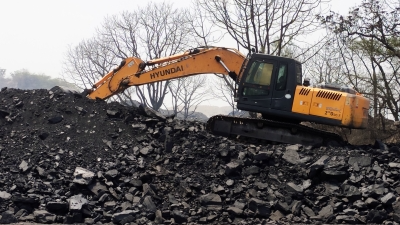The once-soaring Jet Airways has reached the end of its turbulent journey. The Supreme Court's recent liquidation order has dealt a devastating blow to the grounded airline, leaving behind a trail of financial wreckage and shattered hopes for revival. Among the hardest hit are the 1.43 lakh retail investors who had clung to the dream of Jet Airways taking flight once more. Their investment, worth Rs 74.6 crore at the current market capitalization, now hangs in the balance as the airline faces an uncertain future.
History of Highs and Lows:
Jet Airways, founded in 1992, was once India's premier full-service airline, known for its premium offerings and extensive network. However, the late 2010s brought a series of challenges, including mounting debt, rising operational costs, and fierce competition from low-cost carriers. By 2019, the airline was struggling to stay afloat, failing to pay employees and vendors, leading to disruptions and a loss of consumer confidence.
Grounded and in debt:
In April 2019, Jet Airways was forced to cease operations as its debt ballooned to over Rs 7,500 crore. Lenders, led by the State Bank of India, initiated insolvency proceedings under the Insolvency and Bankruptcy Code (IBC), hoping to recover dues through a revival plan.
Glimmer of hope dashed:
The Jalan-Kalrock Consortium (JKC) emerged as the successful bidder in 2021, promising to revive the airline. However, the consortium faced numerous hurdles, including disagreements over payment schedules with lenders and former employees, as well as delays in fulfilling its financial commitments.
Supreme Court's verdict:
The Supreme Court's recent decision to order the liquidation of Jet Airways marks the end of a long and arduous insolvency saga. The court overturned the National Company Law Appellate Tribunal's (NCLAT) ruling that had upheld the transfer of Jet to the JKC, citing the consortium's failure to infuse the required funds within the stipulated timeframe.
Retail investors left in the lurch:
The liquidation order has dealt a severe blow to retail investors who had held onto their Jet Airways shares, hoping for a revival and a return on their investment. These investors, who held a 19.29 percent stake in the airline, now face the prospect of a complete wipeout as the company's assets are liquidated to repay creditors.
Why the Revival Failed:
Several factors contributed to Jet Airways' inability to return to the skies:
Mounting debt: The airline's massive debt burden proved to be an insurmountable obstacle, hindering its ability to invest in operations and compete effectively.
Operational inefficiencies: High operational costs, coupled with legacy issues and a complex organizational structure, made it difficult for Jet Airways to adapt to the changing market dynamics.
Intense competition: The rise of low-cost carriers intensified competition in the Indian aviation market, squeezing profit margins and making it challenging for full-service airlines like Jet Airways to sustain their operations.
Delayed decision-making: The prolonged insolvency process and disagreements among stakeholders delayed crucial decisions, further eroding the airline's chances of revival.
Will liquidation bring closure?
While the Supreme Court's liquidation order brings an end to the uncertainty surrounding Jet Airways' fate, it also raises questions about the effectiveness of the IBC (Insolvency and Bankruptcy Code) process in resolving complex insolvency cases. The liquidation is likely to result in significant losses for creditors and shareholders, and it remains to be seen whether the proceeds from the sale of assets will be sufficient to cover the airline's outstanding debts.
Lessons learned:
The Jet Airways saga serves as a cautionary tale for investors and stakeholders in the aviation industry. It highlights the importance of prudent financial management, operational efficiency, and adaptability in navigating the challenges of a dynamic market. The case also underscores the need for a robust and efficient insolvency resolution framework that can facilitate timely and effective solutions for distressed companies. The liquidation of Jet Airways marks a sad chapter in Indian aviation history. The airline, once a symbol of pride and innovation, has succumbed to the pressures of a competitive market and financial mismanagement. While the future remains uncertain for the airline's employees and stakeholders, the lessons learned from this saga will undoubtedly shape the future of the Indian aviation industry.
DISCLAIMER: This brief is based on information from publicly available sources and reflects the author's interpretation of the topic and do not reflect Prameya's or Prameya News7 editorial stance.










































